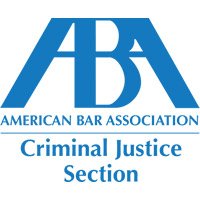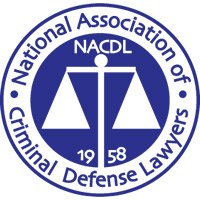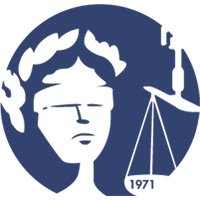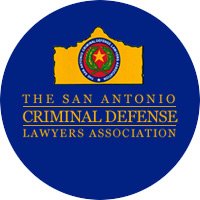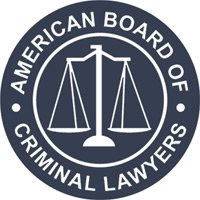ONCE A LIAR
FED. R. EVID. RULE 613, PRIOR STATEMENTS OF WITNESS
- “Statement need not be shown nor its contents disclosed” to witness when examining him concerning a prior statement, but on request the same shall be shown to opposing [This applies to impeachment of witness with prior inconsistent statement.]
- Extrinsic evidence of prior inconsistent statement of witness is not admissible unless the witness is afforded the opportunity to explain or deny the same and the opposite party is afforded an opportunity to interrogate him thereon.
U.S. v. DiNapoli, 557 F.2d 962 (2d Cir. 1977).
Caveat FED. R. EVID. Rule 613 deals with impeachment of a witness with a prior inconsistent statement.
The statement should be admissible as substantive evidence of the truth of the matter therein contained, where it satisfies either:
- R. EVID. Rule 801(d)(1) Prior statements by a witness, or
- R. EVID. Rule 801(d)(2) Admission by party opponent.
Also, the Second Circuit held that counsel cannot offer a prior consistent statement of his own witness where credibility is not attacked.
U.S. v. Fernandez, 829 F.2d 363 (2d Cir. 1987) (stating where counsel offered a cooperating witness’ plea agreement);
U.S. v. Graham, 858 F.2d 986 (5th Cir. 1988) (noting officer could not be cross examined about whether co-defendant had made prior statements at all as co-defendant’s position that he had made such statements was not inconsistent with the prior inculpating statements offered through the police officer). Note: the subsequent positions did not go to the issue of whether the prior statements were true.
THE NEED TO OBTAIN PRIOR STATEMENTS AT THE EARLIEST OPPORTUNITY
JENCKS ACT WITNESS STATEMENT [FED. R. EVID. RULE 26.2]
The Jencks Act [18 U.S.C. § 3500], now replaced by FED. R. EVID. Rule 26.2, provides that “no statement or report . . . made by a Government witness or prospective witness….shall be the subject of subpoena, discovery or inspection until said witness has testified on direct examination in the trial of the case. But then, after a witness has “testified on direct examination,” the Government must “produce any statement … of the witness in the possession of the United States “which relates to the subject matter as to which the witness has testified.” 18 U.S.C. § 3500(a).
While the statute would seem to preclude requiring the government to make pre-trial disclosure of such witness’ statements, subsection (b) of that Act provides that if the Government does wait until after the witness has testified at trial to provide his witness’ statement or report, the Court may recess the proceedings in the trial for such time as it may determine to be reasonably required for the examination of such statement by said defendant and his preparation for its use in the trial, 18 U.S.C. § 3500(b). This is obviously a needlessly time consuming process which could be avoided by early disclosure.
Rule 26.2 is applicable at preliminary hearings, bond hearings, suppression hearings, sentencing revocation hearing, and hearings on writs of habeas corpus. See rules 5.1, 46i, 12i, 32, 32.1, of the Federal Rules of Criminal Procedure.
Contra U.S. v. Algil, 667 F.2d 569 (6th Cir. 1982) (approval of early release of Jencks material, but refusing to require same over prosecution’s objection).
“[W]e note that in most criminal cases, pretrial disclosure will resound to the benefit of all parties, counsel, and the court. Indeed, sound trial management would seem to dictate that Jencks Act material should be transmitted prior to trial, especially in complex cases, so that those abhorrent lengthy pauses at trial to examine documents can be avoided. …We suggest that the district judge may find the pretrial conference, FED. R. CRIM. P. 17.1, a useful forum for establishing a timetable for discovery and for reaching agreements about the scope of disclosure. Particularly in multiple defendant cases, the district judge may solicit broad disclosure to assist him in disposing of motions for severance or in detecting inadmissible confessions under Bruton v. U.S., 391 U.S. 123, 88 S.Ct. 1620, 20 L.Ed.2d 476 (1968). Pretrial discovery should be approached with a spirit of cooperation among court and counsel in order to prevent those burdensome trial recesses and also, we should emphasize to protect the government against post- conviction claims of prejudicial surprise, see U.S. v. Baum, 482 F.2d 1325, 1331- 1332 (2d Cir. 1973), or claims of suppression of material and favorable evidence. See Brady v. Maryland, 373 U.S. 83, 10 L.Ed.2d 215, 83 S.Ct. 1194 (1963); U.S. Percevault, 480 F. 2d at 132.
Furthermore, a continuance may be required to study Jencks material and adequately prepare cross-examination, even if same is provided prior to trial. U.S. v. Holmes, 722 F.2d 37, 40-41 (4th Cir. 1983) (“Here it is clear that defendants were not afforded a reasonable opportunity to examine and digest the mass of material furnished them on the Sunday before the Monday that he trial began… It was therefore an abuse of discretion on the part of the district court to deny a reasonable delay in the progress of the trial to permit counsel to complete their studies and preparation”).
See also U.S. v. Wables, 731 F.2d 440 (7th Cir . 1984).
In fact, 18 U.S.C. § 3500(c) [and see FED. R. CRIM. P. Rule 26.2] expressly provides that “[w]henever any statement is delivered to a defendant pursuant to this section, the court in its discretion, upon application of said defendant, may recess proceedings in the trial for some times as it may determine to be reasonably required for the examination of such statement by said defendants and his preparation for hits use in trial.”
An officer’s rough investigative notes may be Jencks material, particularly where they contain the substance of a witness’ statements to the officer.
U.S. v. Paoli, 603 F.2d 1029 (2d Cir. 1979);
U.S. v. Gaston, 608 F.2d 607, 611-12 (5th Cir. 1979);
U.S. v. Rippy, 606 F.2d 1150, 1153 (D.C. Cir. 1979);
U.S. v. Ammar, 714 F.2d 238 (3d Cir. 1983) (that Jencks Act [now FED. R. CRIM. P. Rule 26.2] includes final reports, rough notes and any drafts used to prepare the final report).
Contra U.S. v. Hinton, 719 F.2d 711 (4th Cir. 1983) (where incorporated into agents reports);
U.S. v. Soto, 711 F.2d 1558 (11th Cir. 1983) (reversing trial court ruleing striking government witness’ testimony on grounds rough notes were not produced).
Government agent’s notes are not discoverable under the Jenck’s Act when the witness had neither signed, read, nor heard his entire statement. The adoption contemplated by the statute must be more formal. U.S. v. Hogan, 763 F.2d 697, 704 (5th Cir. 1985). In addition, the defense is not entitled to a pre-sentence report on a government witness as Jencks material. U.S. v. Dingle, 546 F.2d 1378 (10th Cir. 1976).
Accordingly, while some courts require preservation of such “notes,”
U.S. v. Sanchez, 635 F.2d 47, 65-66 (2d Cir. 1980);
U.S. v. Gantt, 617 F.2d 831, 841 (D.C. Cir. 1980);
U.S. v. Walden, 590 F.2d 85, 86 (3d Cir.) cert. denied, 444 U.S. 849 (1979);
U.S. v. Crowell, 586 F.,2d 1247, 1248 (4th Cir. 1973,
Others hold that routine and good faith destruction of these notes which have been incorporated into formal reports does not violate the Jencks Act.
U.S. v. Cole, 634 F.2d 866, 867-68 (5th Cir. 1981);
U.S. v. Kuykendall, 633 F.2d 118, 199 (8th Cir. 1980);
U.S. v. Fredrick, 583 F.2d 273, 274 (6th Cir.), cert. denied, 444 U.S. 860 (1978);
U.S. v. Shovea, 580 F.2d 1382, 1289-90 (10th Cir. 1978).
RULE 26.2 DOES NOT PRECLUDE PRETRIAL DISCLOSURE
Since Rule 26.2 has no language limiting or precluding disclosure of witness statements prior to trial, production of statements used by a witness to refresh his or her recollection at a pretrial “hearing” should be permitted. See U.S. v. Salsedo, 477 F.Supp 1235 (E.D. Cal. 1979); see also FED. R. CRIM. P. Rule 12(i) (noting 1983 Amendment to expanding pretrial production of government witness’ statements to any law enforcement officer, even if called by the defendant).
“Although the situation is at best muddled, we prefer to believe that Rule 612 should now be interpreted as it would have been prior to the 1971 change- i.e., as if there was no reference to 18 U.S.C. § 3500 This interpretation will eliminate [the] problem which arose in federal courts prior to the effective date of Rule 26.2: whether the Jencks Act controlled in preliminary hearing or whether Rule 612 could be applied. If the Jencks Act applied on the theory that Rule 612 made it the exclusive vehicle for production in a criminal proceeding, then it was doubtful whether a court could order production of a statement of a witness testifying at the preliminary hearing. Rule 26.2 unlike section 3500, does not have the ‘in the trial’ limiting language.” Weinstein & Berger, Weinstein’s Evidence, § 612 [02] (1988).
The language of the Jencks Act was amended by Rule 26.2 “after long and careful consideration by the Advisory Committee, the Supreme Court and the Congress.” Weinstein & Berger, Weinstein’s Evidence, ¶612[02] (1988).
“As a general rule, the enactment of revisions and codes manifestly designed to embrace an entire subject of legislation operates to repeal former acts dealing with the same subject, although there is no repealing clause to that effect.” 73 Am.Jr.2d
- 411. See also Weinstein & Berger, Weinstein’s Evidence, §612[02] (1988).
Here, according to the enabling statute “all laws in conflict with such rules [of criminal procedure] shall be of no further force or effect after such rules have taken effect.” 18 U.S.C.
- 3737. Accordingly, the Jencks Acts’ 1970 prohibition against pretrial disclosure of witnesses’ statements, being in conflict with the recent enactment of Rule 26.2, has no force or effect.
As one of the leading commentators has noted, while the Jencks Act was not repealed with the enactment of the all-encompassing Rule 26.2, “it should be deemed repealed.” Weinstein & Berger, Weinstein’s Evidence, ¶ 612[02] (1978).
Courts have applied Rule 26.2 to provide for pretrial discovery of even statements made by one other than the testifying witness. U.S. v. Musgrave, No. SA-80-CR-70 (W.D. Tex., July 22, 1985).
This Court believes that the reports read by Special Agent Allen at the preliminary hearing on June 17, 1985, qualify as ‘statements’ within the meaning of Rule 26.2. Although the reports were prepared by another case agent, Special Agent Allen relied upon those reports to provide various factual information. His reliance on the reports indicates his belief that the reports were accurate and thus this Court is of the opinion that his reliance on the reports manifests his adoption of the matters set forth therein. Consequently, this Court is of the opinion that Allen adopted the information contained in the reports as his own and thus that the reports constitute ‘statements’ within the meaning of Rule 26.2 and are discoverable by the Defendant to the extent that the reports are relevant to Special Agent Allen’s testimony.
The Government claims that FED. R. CRIM. P. Rule 12(i) limits the application of Rule 26.2 to suppression hearings. This Court does not agree. While Rule 12(i) provides that Rule 26.2 shall apply at suppression hearings, it contains no other language that would appear to limit the Rule’s application strictly to hearings arising in connection with a motion to suppress…
Rule 26.2 contains no indication that the rule is to apply only at suppression hearings or at trial.
Compare FED. R. CRIM. P. Rule 26.2;
18 U.S.C. § 3500.
Consequently, this Court believes that Rule 26.2 applies to the proceeding at issue and thus believes that the statements read by Special Agent Allen should have been disclosed to the Defendant insofar as they were relevant to his testimony.”
U.S, v. Musgrave, Supra.
More recently in U.S. v. Salinas, SA-89-CR-77 (W.D. Tex. September 29, 1990) (noting the District Court ordered production of agents’ reports to the Magistrate for him to review and determine those which must be produced to the defense).
WITNESS STATEMENTS ARE DISCOVERABLE AT “DETENTION HEARING”
In 1993, FED. R. CRIM. P. Rule 46 was amended to provide for the production of witness statements at a detention hearing, required to be held within days after an individual’s arrest.
“Rule 46. Release From Custody….
(i)PRODUCTION OF STATEMENTS.
(1) In General. Rule 26.2(a)-(d) and (f) applies at a detention hearing held under 18 U.S.C. § 3144, unless the court for good cause shown, rules otherwise in a particular case.”
WITNESS STATEMENTS ARE DISCOVERABLE AT SUPPRESSION HEARING
FED. R. CRIM. P. Rule 12(i) makes Rule 26.2’s requirement for production of witness statements applicable to pretrial suppression hearings, whether a “law enforcement” officer is called by the prosecution or defense.
“Rule 12 Pleadings and Motions Before Trial…
(i) Production of Statements at Suppression Hearing. Except as herein provided, Rule 26.2 shall apply at a hearing on a motion to suppress evidence under subdivision (b)(3) of this rule. For purposes of this subdivision, a law enforcement officer shall be deemed a witness called by the government, and upon a claim of privilege the court shall excise the portions of a statement containing privileged matter.”
THE NEED TO INTERVIEW THE GOVERNMENT CLIENT
Where witnesses, particularly eyewitnesses, are known to the defense they should be made available to both sides.
U.S. v. Brown, 555 F.2d 407, 425 (5th Cir. 1977);
U.S. v. Scott, 578 F.2d 261, 268 (6th Cir. 1975);
U.S. v. Long, 449 F.2d 288, 295 (8th Cir. 1977);
U.S. v. Gregory, 369 F.2d 185 (D.C. Cir. 1966);
U.S. v. Walton, 602 F.2d 1176, 1179-80 (4th Cir. 1979).
“Witnesses, particularly eye-witnesses to a crime are the property of neither the prosecution nor the defense. Both sides have an equal right, and should have an equal opportunity to interview them.” Gregory v. U.S., 369 F.2d 185 (D.C. Cir. 1966).
EVEN IF THE GOVERNMENT’S CLIENT IS IN “PROTECTION” PROGRAM
In U.S. v. Walton, 692 F.2d 1176 (4th Cir. 1979), the Fourth Circuit held that even where the government felt “…it necessary to place witnesses in protective custody,” it remains “the duty of the trial court to ensure that counsel for defense has access to the secluded witness under controlled arrangements,” noting:
“A witness is not the exclusive property of either the government or a defendant; a defendant is entitled to have access to any prospective witness, although in the end the witness may refuse to be interviewed.” U.S. v. Walton, 692 F.2d at 1177-78.
PRE-SENTENCE REPORTS OF CO-DEFENDANTS
The Fifth Circuit in U.S. v. Trevino, 556 F.2d 2165 (5th Cir. 1977) has held these reports are not discoverable under Rule 16, Jencks Act, or Brady, unless actually in the possession of the United States Attorney. The Fourth Circuit, however, has held that if a report contains exculpatory material, that portion must be discloses. However, if a report is only material to impeach the witness, reversal for failure to disclose is only required when there is a reasonable likelihood of the report affecting the trier of fact. U.S. v. Figurski, 545 F.2d 389 (4th Cir. 1976).
“IMPEACHMENT” EVIDENCE IS “EXCULPATORY” FOR BRADY PURPOSES
Material discoverable under Brady v. Maryland, 373 U.S. 83 (1963) includes evidence “favorable to the accused either direct or impeaching.”
Williams v. Dutton, 400 F.2d 797 (5th Cir. 1972);
Giles v. Maryland, 386 U.S. 66, 76 (1967);
Giglio v. U.S., 405 U.S. 150 (1972);
U.S. v. Poole, 379 F.2d 828 (7th Cir. 1967);
U.S. v. Miller, 411 F.2d 825 (2d Cir. 1969).
In Kyles, v. Whitley, 115 S.Ct. 1555 (1995), the Supreme Court placed the onus on the prosecution to produce exculpatory evidence that was significant enough to result in a denial of defendant’s right to a fair trial. The significance of such evidence is not evaluated in isolation but considered cumulatively with all the similarly exculpatory or impeachment information of which any member of the prosecution team is aware. Kyles v. Whitley, 115 S.Ct. 1555 (1995). The evidence found material was that: one out of four eye witnesses’ description did not match Kyles; statements made by a witness of the state did not express concern that he might be a suspect; license plates from cars at the scene which might have revealed suspects the state did not pursue.
“The fourth and final aspect of Bagley materiality to be stressed here is its definition in terms of suppressed evidence considered collectively, not item by item. [T]he prosecution…must be assigned the consequent responsibility to gauge the likely net effect of all such evidence and make disclosure when the point of “reasonable probability” [that, had the evidence been disclosed to the defense, the result of the proceeding would have been different. Kyles v. Whitley, 115 S.Ct. 1555, 1558 (1995)] is reached. This in turn means that the individual prosecutor had a duty to learn of any favorable evidence known to the others acting on the government’s behalf in the case, including the police. But whether the prosecutor succeeds or fails in meeting this obligation (whether, that is, a failure to disclose is good faith or bad faith … the prosecution’s responsibility for failing to disclose known, favorable evidence rising to a material level of importance is inescapable.” Kyles v. Whitley, 115 S.Ct. 1555, 1567, 1568 (1995).
Furthermore, the right to disclosure under Brady should include pre-trial discovery by the defendant.
U.S. v. Gleason, 265 F. Supp. 880, 884-85 (S.D.N.Y. 1967) (requiring in-camera inspection prior to trial);
U.S. v. Morrison, 43 F.R.D. 516, 520 (N.D. Ill. 1967);
U.S. v. Ladd, 48 F.R.D. 166 (D. Alaska, 1969);
U.S. v. Ahmad, 53 F.R.D. 186, 193-94 (M.D. Pa. 1971);
U.S. v. Partin, 320 F. Supp. 275, 284-85 (E.D. La. 1970);
U.S. v. Leta, 60 F.R.D. 127 (D.C. Pa. 1973);
U.S. Ex rel Drw v. Myers, 327 F.2d 174 (3d Cir. 1964);
ABA Standards, Discovery and Procedure Before Trial, (approved 1970), 2.1).
See contra U.S. v. Leighton, 265 F. Supp. 27, 35 (S.D.N.Y. 1967);
Ashley v. Texas, 399 F.2d 610, 615 (5th Cir. 1963);
U.S. ex rel Butler v. Maroney, 319 F.2d 622 (3d Cir. 1963);
U.S. v. American Oil Co., 286 F. Supp. 742, 754 (D.N.S. 1963);
U.S. v. More, 439 F.2d 1107, 1108 (6th Cir. 1971).
Certainly pre-trial discovery of Brady materials should be allowed with respect to material which is “obviously exculpatory” or of “such a nature that delay in disclosure would prevent the defendant from effectively using it at trial.” U.S. v. Cobb, 271 F. Supp. 159, 164 (S.D.N.Y. 1967). After all, Brady itself involved a pre-trial request for a co-defendant’s statement.
“[I]t is recognized that there are some categories of exculpatory evidence which would be of little use unless discovered before trial.” U.S. v. Ladd, 48 F.R.D. 266, 267 (D. Alaska).
Where exculpatory evidence is contained in a statement of a Government witness, discoverable under the Jencks Act only after the witness has testified, then the Jencks Act’s “…statutory restrictions must accommodate the demands of due Process,” and the relevant portions disclosed prior to trial. U.S. v. Gleason, 265 F. Supp 880, 887 (S.D.N.Y. 1967).
Contra U.S. v. Eisenberg, 469 F.2d 156 (8th Cir. 1972).
The obligation to disclose favorable evidence to the accused is that of the Government and failure to disclose such information is not excused merely because the prosecutor did not have actual knowledge of such favorable evidence.
Barbee v. Warden, 331 F.2d 842, 846 (4th Cir. 1964);
Rhinebart v. Rhay, 440 F.2d 725 (9th Cir. 1971), cert. denied, 404 U.S. 825;
U.S. v. Auten, 632 F.2d 478 (5th Cir. 1980) (stating prosecutor cannot “compartmentalize” his information by not inquiring of the “prosecutorial team”).
“The duty of disclosure affects not only the prosecutor, but the Government as a whole, including its investigative agencies.” U.S. v. Bryant, 439 F.2d 642, 650 (D.C. Cir. 1971).
Contra Luna v. Beto, 395 F.2d 135 (5th Cir. 1968).
This is because the rationale which underlies the Brady rule is not only based upon the desire to proscribe prosecutorial misconduct but to insure that the defendant receives a fair trial. Consequently, the fact that a Government agency suppresses evidence from the prosecutor should not be controlling where such adversely affects the defendant’s right to a fair trial.
However, it has been held the prosecutor need not go out and seek information favorable to an accused from non-governmental third parties. U.S. v. Burns, 668 F.2d 855 (5th Cir. 1982).
Certainly upon defense request a prosecutor has an obligation to exercise due diligence to determine if Government agencies have any information favorable to the defendant. MOORE’S FEDERAL PRACTICE – CRIMINAL RULES § 16.06[1]; U.S. v. Robert, 338 F.2d 640, 648 (2d Cir. 1968).
Brady motions should be as specific as possible with respect to the items sought (e.g. names, addresses, and statements of witnesses to the offense unable to identify the defendant); however, the very nature of the Brady rule makes a particularized request in many instances a practical impossibility.
“If the defense does not known of the existence of the evidence, it may not be able to request its production. A murder trial-indeed any criminal proceeding- is not a sporting event.” Giles v. Maryland, 386 U.S. 66 (1967) (Fortas, J., concurring).
Cf. U.S. v. Agurs, 427 U.S. 97 (1976).
Materials and evidence which have been held to constitutionally require disclosure under
Brady v. Maryland include:
extrajudicial statements of a co-defendant favorable to the accused (indicating that defendant was guilty of murder but not capital murder as he had not pulled the trigger),
Brady v. Maryland, 373 U.S. (1963) (evidence impeaching Government witnesses [“…favorable to the accused either direct or impeaching”]); Williams v. Dutton, 400 F. 2d 797 (5th Cir. 1968).
See also Giglio v. U.S., 405 U.S. 150 (1972);
Giles v. Maryland, 386 U.S. 66, 76 (1976);
U.S. v. Poole, 379 F.2d 828 (7th Cir. 1967);
U.S. v. Miller, 411 F.2d 825 (2d Cir. 1969); Prior sexual relations by a prosecutrix in a rape case,
Giles v. Maryland, 386 U.S. 66 (1967) (remanded for further proceedings; medical examination disclosing no evidence that kidnap victim had been sexually assaulted);
See also U.S. v. Poole, 379 F.2d 648 (7th Cir. 1967) (eye witness’s oral statement that gave description which differed from defendant’s appearance [“defendant’s complexion was too dark for him to have been the man she saw”]);
Jackson v. Wainwright, 390 F.2d 388 (5th Cir. 1968), cert. denied, 593 U.S. 180 (showing psychiatric reports indicating the defendant’s insanity); Ashley v. Texas, 319 F.2d 80 (5th Cir. 1963) (showing eyewitness report indicating self-defense);
Butler v. Maroney, 319 F.2d 622 (3d Cir. 1963) (showing with paint, no blood);
Miller v. Pate, 388 F.2d 737 (9th Cir. 1968) (fact that defendant appeared under influence of alcohol shortly after offense);
U.S. ex rel Thompson v. Dye, 221 F.2d 1955 (3d Cir. 1955) (criminal record of prosecution witness);
In re Ferguson, 489 F.2d 1234 (9th Cir. 1971) (unreliability of Government witness);
Mesarosh v. U.S., 352 U.S. 1 (1956) (fact that Government witness had faulty recollection of facts later testified to at trial);
Levin v. Clark, 408 F.2d 1209 (D.C. Cir. 1967) (instructions to Government witness not to speak with defense counsel, or to do so only in presence of Government counsel);
Gregory v. U.S., 369 F.2d 185, 187-89 (D.C. Cir. 1966);
Coppolinio v. Helpern, 266 F. Supp. 930 (S.D.N.Y. 1967) (showing evidence of a witness’s unstable mental condition);
Giles v. Maryland, 386 U.S. 66, 75, n. 6 (1967) (Government witness was an informer);
U.S. v. Olt, 489 F.2d 872 (7th Cir. 1973) (information that prosecution’s key witness was the paramour of the defendant’s murdered wife);
Alcorta v. Texas, 355 U.S. 28 (1957) (information indicating Government witness’ untruthfulness [e.g. witness’ false testimony]);
Napue v. Illinois, 360 U.S. 264 (1959) (scientific information regarding ballistics or fingerprint examinations indicating defendant did not fire weapon in questions);
Barbee v. Warden, 331 F.2d 842 (4th Cir. 1964) (proving name of witness who had stated that the defendant was not at the scene of the crime);
U.S. ex rel Meers v. Wilkins, 326 F.2d 135 (2d Cir. 1964) (identity of any witnesses who can give favorable testimony for accused);
U.S. v. Hinkle, 307 F. Supp. 117 (D.D.C. 1969);
U.S. v. Cody, 722 F.2d 1052, 1062 (2d Cir. 1983) (FBI Agents’ threats inducing witness to continue recording conversations with RICO defendant);
Austin v. McKaskle, 724 F.2d 1153, 1156 (5th Cir. 1984) (witness’ perjured testimony of aggravating factors at sentencing hearing leading to life sentence).
A defendant’s objection to the Government’s use of undisclosed Brady testimony is not waived by the extensive cross-examination of the witness if the trial court, in overruling the objection, expressly sets direction of trial proof on the matter. See U.S. v. Hogan, 763 F.2d 697, 701 (5th Cir. 1985).
BRADY LIVES
REGARDLESS WHETHER PROSECUTOR ACTUALLY AWARE OF EVIDENCE
“On habeas review, we follow the established rule that the state’s obligation under Brady v. Maryland [citation omitted], to disclose
evidence favorable to the defense, turns on the cumulative effect of all such evidence suppressed by the government, and we hold that the prosecutor remains responsible for gauging that effect regardless of any failure by the police to bring favorable evidence to the prosecutor’s attention” Kyles v. Whitley, 514 U.S. 419, 131 L. Ed. 2d 490, 115 S.Ct. 1555 (1995).
WHETHER EVIDENCE IS EXCULPATORY OR ONLY “IMPEACHING”
The Court made clear again that it matters not whether the withheld evidence is truly exculpatory or merely “impeaches” a prosecution witness.
“In the third prominent case on the way to current Brady law, United States v. Bagley, 473 U.S. 667 (1965), the Court disavowed any difference between exculpatory and impeachment evidence for Brady purposes, and it abandoned the distinction between the
…’specific request’ and ‘general-or-no-request’ situations…Bagley held that regardless of request, favorable evidence is material, and constitutional error results from its suppression by the government.” Kyles v. Whitley, 514 U.S. 419, 131 L.Ed.2d 490, 115 S.Ct.1555 (1995).
EVEN IF NEVER REQUESTED BY THE DEFENSE
The Supreme Court “found a duty on the part of the Government even…where the Government failed to volunteer exculpatory evidence never requested, or requested only in a general way.”
NEED NOT UNDERCUT EVERY ITEM OF INCRIMINATING EVIDENCE
The withheld exculpatory or impeaching matters need not undercut every item of incriminating evidence to require reversal under Brady.
“In assessing the significance of the evidence withheld, one must of course bear in mind that not every item of the State’s case would have been directly undercut if the Brady evidence had been disclosed…” Kyles v. Whitley 514 U.S. 419, 131 L.Ed.2d 490, 115 S.Ct. 1555 (1995).
AS IF JUSTICE SOUTER LISTENED TO O.J.’s CLOSING ARGUMENT
“[T]he question is not whether the State would have had a case to go to the jury if it had disclosed the favorable evidence, but whether we can be confident that the jury’s verdict would have been the same. Confidence that it would have been cannot survive a recap of the suppressed evidence and its significance from the prosecution.
The jury would have been entitled to find
- that the investigation was limited by the police’s uncritical readiness to accept the story and suggestions of an informant whose accounts were inconsistent…;
- that the lead police detective who testified was either les than wholly candid or less than fully informed;
- that the informant’s behavior raised suspicions that he had planted both the murder weapon and the victim’s purse in the places they were found;
- that one of the four eyewitnesses crucial to the State’s case had given a description that did not match the defendant and better described the informant;
- that another eyewitness had been coached, since he had first stated that he had not seen the killer outside the getaway car, or the killing itself, whereas at trial he claimed to have seen the shooting, described the murder weapon exactly, and omitted portions of his initial description that would have been troublesome for the case;
- that there was no consistency to eyewitness descriptions of the killer’s height, build, age, facial hair, or hair
Since all of these possible findings were precluded by the prosecutor’s failure to disclose the evidence that would have supported them, ‘fairness’ cannot be stretched to the point of calling this a fair trial. Perhaps, confidence that the verdict would have been the same could survive the evidence impeaching even two eyewitnesses if the discoveries of gun and purse were above suspicion. Perhaps those suspicious circumstances would not defeat confidence in the verdict if the eyewitnesses had generally agreed on a description and were free of impeachment. But confidence that the verdict would have been unaffected cannot survive when suppressed evidence would have entitled a jury to find that the eyewitnesses were not consistent in describing the killer, that two out of the four eyewitnesses testifying were unreliable, that the most damning physical evidence was subject to suspicion, that he investigation that produced it was insufficiently probing, and that the principal police witness was insufficiently informed or candid.” Kyles v. Whitley, 514 U.S. 419, 131 L.Ed.2d 490, 115 S.Ct. 1555 (1995).
STUTTER-STEP BACKWARDS?
While reaffirming their decision in Kyles, and not retreating from prior holdings that evidence need not necessarily be admissible to constitute Brady material, on October 10, 1995 the Supreme Court, in another five to four per curiam opinion, summarily reversed a Ninth Circuit decision that found the failure to disclose non-admissible polygraph examination indicating two key prosecution witnesses had been less than truthful, constituted a Brady violation. Wood v. Bartholomew, 516 U.S. 1, 133 L.Ed.2d 1, 116 S.Ct. 7(1995).
“In short, it is not ‘reasonably likely’ that disclosure of the polygraph results—inadmissible under state law—would have resulted in a different outcome at trial…
Whenever a federal court grants habeas relief to a state prisoner the issuance of the writ exact great cost to the State’s legitimate interest in finality. And where, as here, retrial would occur 13 years later, those costs and burdens are compounded many times. Those costs may be justified where serious doubts about the reliability of a trial infected with constitutional error exist. But where, as in this case, a federal appellate court, second –guessing a convict’s own trial counsel, grants habeas relief on the basis of little more than speculation with slight support, the proper delicate balance between the federal courts and the States is upset to a degree that requires correction.”


